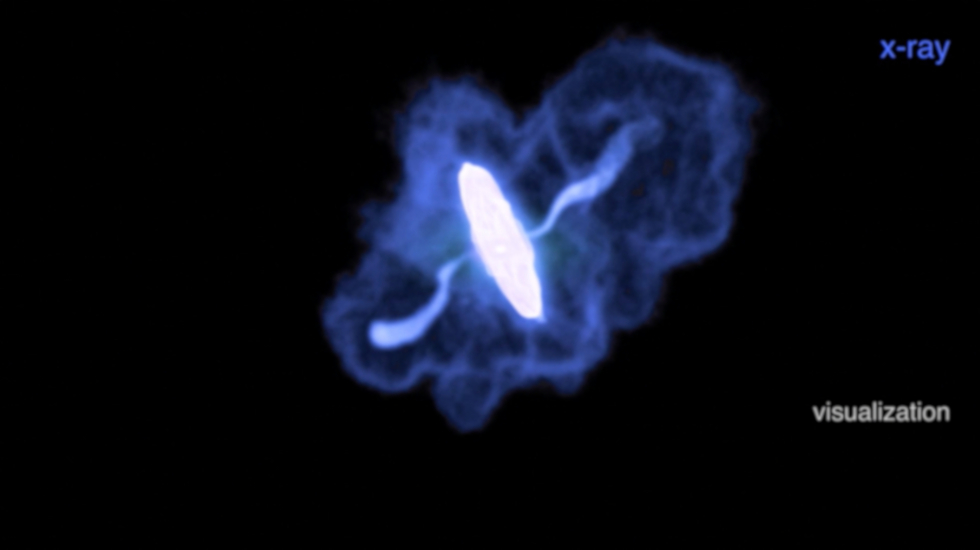
 Credit: ASA/ESA/STScI/F.Summers, et al.; NASA/CXC/SAO/N.Wolk, et al., & NASA/Caltech/IPAC/R.Hurt
Credit: ASA/ESA/STScI/F.Summers, et al.; NASA/CXC/SAO/N.Wolk, et al., & NASA/Caltech/IPAC/R.Hurt
Cracking the Crab
The Crab Nebula is one of the best-studied supernova remnants in the sky. It was produced by the explosive death of a massive star, observed by Chinese astronomers in 1054 CE. This explosion was bright enough to see during the daytime for weeks, and visible to the naked eye during the night for almost two years afterwards. Though no longer a naked-eye object, the Crab has been studied by a wide range of ground-based and space-based telescopes. It shines in all wavelengths of electromagnetic radiation, from long-wavelength radio to high energy gamma rays. High definition observations obtained by the Hubble Space Telescope in the optical, the Spitzer Space Telescope in the infrared, and the Chandra X-ray Observatory help us to understand how the explosion worked, and how the various leftovers interact with each other and the gas and dust around the Crab. These data have now been combined into a stunning 3-D visualization of the Crab, allowing us to fly around it as if we were physically there. The image above is a visualization derived mostly from X-ray data from Chandra, and emphasizes the high energy emission from a hot disk of material which surrounds an X-ray (and optical) pulsar, the tiny, incredibly dense neutron star remnant of the collapsed core of the exploded star. The pulsar produces wobbly jets of high-energy particles which shoot out perpendicular to the disk. Infrared and optical images help detail how powerful magnetic fields from the pulsar interact with the gas expelled in the explosion, and show the detailed distribution of chemical elements cooked up by the star (and by the explosion itself) as they're ejected into space. The Crab is an incredibly rich object for the study of what happens after stars go supernova. Be sure to take a tour.
Published: January 13, 2020
<
HEA Dictionary ● Archive
● Search HEAPOW
● Other Languages
● HEAPOW on Facebook
● Download all Images
● Education ● HEAD
>

Each week the HEASARC
brings you new, exciting and beautiful images from X-ray and Gamma ray
astronomy. Check back each week and be sure to check out the HEAPOW archive!
Page Author: Dr. Michael F. Corcoran
Last modified Monday, 26-Feb-2024 17:45:05 EST


